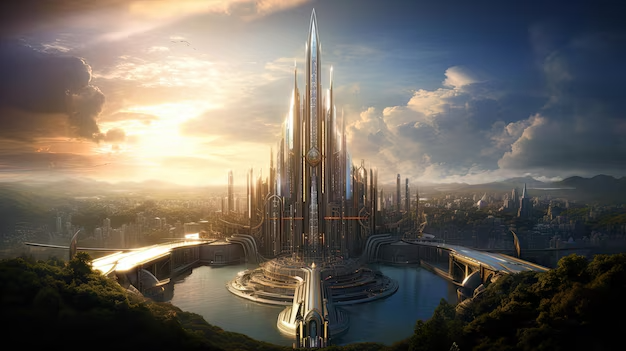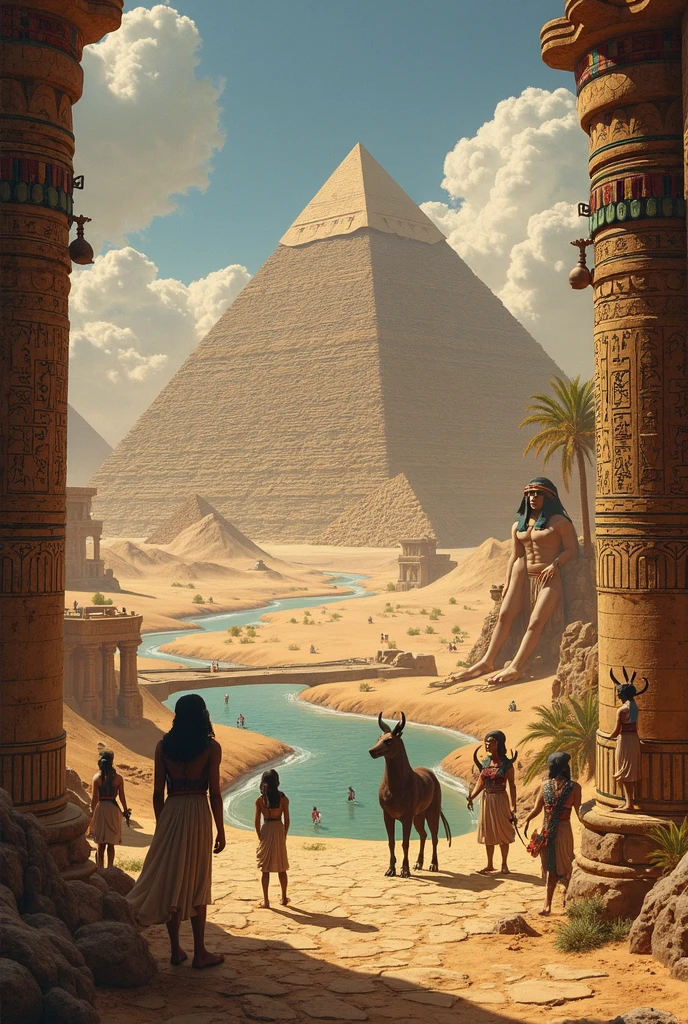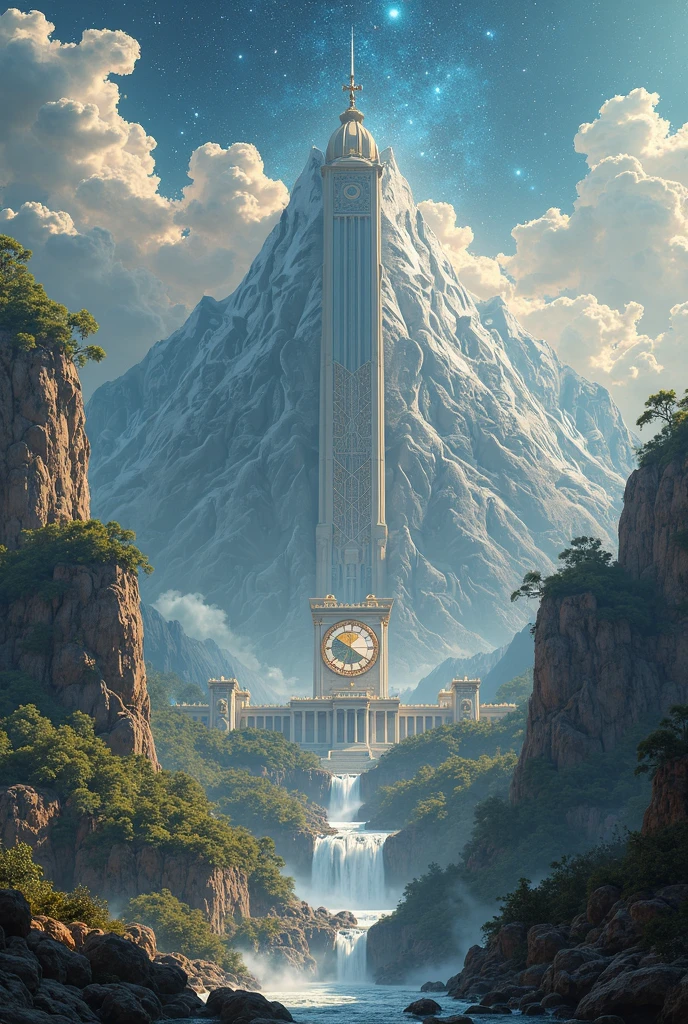Babylonian Mythology: The Legacy of Marduk and the Gods of Mesopotamia
The ancient civilization of Babylon left behind a rich tapestry of myths and legends, with Marduk standing as its most revered deity. Babylonian mythology, deeply intertwined with the cultures of Sumer and Akkad, offers a fascinating glimpse into the beliefs of one of history’s greatest empires. From the epic Enuma Elish to the tales of Tiamat and Ishtar, these stories shaped the religious and political landscape of Mesopotamia.
The Pantheon of Babylonian Gods
Babylonian mythology features a complex hierarchy of gods, each governing aspects of nature, war, and human destiny. At the pinnacle stood Marduk, the patron god of Babylon, whose rise to supremacy is chronicled in the Enuma Elish, the Babylonian creation epic.
Key Deities in Babylonian Mythology
| Deity | Role | Symbol |
|---|---|---|
| Marduk | King of the gods, god of storms and creation | Dragon (Mushussu) |
| Tiamat | Primordial goddess of the sea and chaos | Serpent or dragon |
| Ishtar | Goddess of love, war, and fertility | Star and lion |
| Enlil | God of wind and storms (earlier Sumerian influence) | Horned crown |
The Enuma Elish: Marduk’s Rise to Power
The Enuma Elish is the foundational text of Babylonian mythology, detailing the cosmic battle between Marduk and the primordial goddess Tiamat. This epic not only explains the creation of the world but also legitimizes Babylon’s political dominance under King Nebuchadnezzar and others.
- Tiamat, representing chaos, creates monstrous beings to overthrow the younger gods.
- Marduk is chosen as the champion of the gods and defeats Tiamat in a colossal battle.
- From Tiamat’s body, Marduk forms the heavens and the earth, establishing order.
- Humanity is created from the blood of Tiamat’s consort, Kingu, to serve the gods.
For a deeper dive into the Enuma Elish, check out this detailed analysis.
Marduk: The Supreme God of Babylon
Marduk‘s ascension to kingship over the gods mirrored Babylon’s rise as a political power. His temple, the Esagila, and its ziggurat (possibly the inspiration for the Tower of Babel) stood at the heart of the city.
Symbols and Worship of Marduk
Marduk was associated with:
- The Mushussu, a dragon-like creature symbolizing his power.
- The Akitu festival, celebrating his victory over Tiamat and the renewal of kingship.
- The Tablet of Destinies, which granted him authority over the cosmos.
Learn more about Marduk’s role in Babylonian society in this comprehensive article.
Ishtar: The Duality of Love and War
Another pivotal figure in Babylonian mythology was Ishtar, the goddess of love and war. Her descent into the underworld is one of the most enduring myths, symbolizing the cycle of death and rebirth.
The Descent of Ishtar
- Ishtar ventures into the underworld to challenge her sister, Ereshkigal.
- She is stripped of her powers and trapped, causing fertility to cease on earth.
- Through cunning and divine intervention, Ishtar is resurrected, restoring balance.
The Tower of Babel: Myth and Reality
The legendary Tower of Babel, though often associated with biblical narratives, has roots in Babylonian culture. The Etemenanki ziggurat, dedicated to Marduk, may have inspired this myth.
| Feature | Description |
|---|---|
| Location | Babylon, near the Esagila temple |
| Height | Approximately 91 meters (300 feet) |
| Purpose | Religious ceremonies honoring Marduk |
For more on the historical Tower of Babel, visit this informative resource.
Nebuchadnezzar and the Revival of Babylonian Mythology
Under King Nebuchadnezzar II, Babylon experienced a resurgence, and the worship of Marduk was revitalized. The king’s inscriptions often credited Marduk for his military successes and building projects.
- Rebuilt the Esagila temple and Etemenanki ziggurat.
- Commissioned the famous Ishtar Gate, adorned with dragons (symbols of Marduk) and lions (symbols of Ishtar).
- Promoted the Akitu festival to reinforce divine kingship.
Explore more fascinating myths and history on our page, and don’t forget to follow us on facebook.com/zatiandrops for daily updates!
The Underworld and Babylonian Afterlife Beliefs
In Babylonian mythology, the underworld, known as Irkalla or Kur, was a dark, gloomy realm ruled by the goddess Ereshkigal. Unlike later concepts of heaven and hell, it was neither a place of reward nor punishment—simply an inevitable destination for all souls.
Key Features of Irkalla
- Guarded by the seven gates, each stripping away a piece of the soul’s identity.
- Inhabited by demons like Namtar (the fate-decreeing demon) and Humbaba (the monstrous guardian).
- No return for mortals, except in rare cases like Ishtar’s myth or the legend of Adapa.
| Underworld Figure | Role |
|---|---|
| Ereshkigal | Queen of the underworld, sister of Ishtar |
| Nergal | God of plague and war, later co-ruler of Irkalla |
| Namtar | Demon of destiny, Ereshkigal’s vizier |
The Epic of Gilgamesh: Mortality and Divine Favor
Though of Sumerian origin, the Epic of Gilgamesh was widely revered in Babylon. The story of Gilgamesh, the semi-divine king of Uruk, explores themes of friendship, loss, and the futile quest for immortality.
Major Themes in Gilgamesh
- Enkidu’s death—Gilgamesh’s grief drives him to seek eternal life.
- The Flood narrative (parallel to Noah’s Ark), where Utnapishtim survives by divine warning.
- The Plant of Rejuvenation, stolen by a serpent—symbolizing humanity’s inevitable mortality.
For an in-depth study of the Epic of Gilgamesh, refer to this Metropolitan Museum article.
Babylonian Astrology and Celestial Deities
Babylonians were pioneers in astronomy, and their myths often linked gods to celestial bodies. The Babylonian zodiac influenced later Greek and Roman systems.
| Deity | Celestial Body | Modern Equivalent |
|---|---|---|
| Shamash | Sun | Solar deity of justice |
| Sin (Nanna) | Moon | God of wisdom and timekeeping |
| Ishtar | Venus | Morning/Evening Star |
The Venus Tablet of Ammisaduqa
One of the oldest astronomical records, this tablet tracks Ishtar’s (Venus) movements, used for omens and predicting kings’ fates.
Demons and Protective Spirits in Babylonian Lore
Babylonians feared supernatural entities like Lamashtu (child-stealing demoness) and relied on apotropaic magic for protection.
- Pazuzu—The wind demon, ironically invoked to ward off Lamashtu.
- Shedu—Winged bull guardians of palaces and temples.
- Utukku—Malevolent spirits causing disease.
The Role of Priests and Divination
Babylonian priests (āšipu) played crucial roles as healers and interpreters of omens. Techniques included:
- Haruspicy—Reading animal livers (extispicy).
- Lecanomancy—Divination using oil and water patterns.
- Astrology—Charting planetary movements for prophecies.
The Enuma Anu Enlil
A collection of 70 celestial omens, used to advise kings. For example, a lunar eclipse signaled impending disaster.
Babylonian Influence on Later Cultures
Elements of Babylonian mythology permeated neighboring civilizations:
- Assyrian—Adopted Marduk as Ashur, their national god.
- Hebrew—Flood myths and Tower of Babel parallels.
- Greek—Ishtar’s descent inspired Persephone’s myth.
Artifacts and Archaeological Discoveries
Key findings that shaped our understanding:
| Artifact | Significance |
|---|---|
| Code of Hammurabi | Stele linking laws to divine authority (Marduk and Shamash). |
| Cylinder of Nabonidus | Describes Marduk’s temple restoration. |
| Ishtar Gate | Glazed bricks depicting dragons (Marduk) and lions (Ishtar). |
Delve deeper into Babylonian artifacts at the British Museum’s Mesopotamia gallery.
Lesser-Known Deities and Local Cults
Beyond Marduk and Ishtar, regional gods held significance:
- Nabu—God of writing (Marduk’s son), worshipped in Borsippa.
- Nisaba—Sumerian holdover, goddess of grain and scribes.
- Dumuzid (Tammuz)—Shepherd god whose death symbolized seasonal cycles.
The Tammuz Cult
Annual rituals mourned Dumuzid’s descent into the underworld, akin to Ishtar’s myth, reflecting agricultural cycles.
Explore more fascinating myths and history on our page, and don’t forget to follow us on facebook.com/zatiandrops for daily updates!
The Role of Animals in Babylonian Mythology
Animals played a significant role in Babylonian myths, often serving as divine symbols or avatars of gods. These creatures were deeply intertwined with religious iconography and daily life.
Sacred Animals and Their Divine Associations
| Animal | Deity Connection | Symbolic Meaning |
|---|---|---|
| Lion | Ishtar | Power, ferocity in war |
| Dragon (Mushussu) | Marduk | Supreme authority |
| Bull | Adad (storm god) | Strength, fertility |
| Scorpion | Ishara (goddess of oaths) | Protection, vengeance |
Babylonian Creation Myths Beyond Enuma Elish
While the Enuma Elish is the most famous creation story, other Babylonian texts offer alternative cosmologies.
The Eridu Genesis
- Describes creation by the god Enki at the sacred city of Eridu.
- Includes an early flood narrative predating the biblical story.
- Emphasizes humanity’s role as servants to the gods.
The Atrahasis Epic
- Explains how humans were created to relieve the gods of labor.
- Features multiple attempts by the gods to control human population.
- Contains another version of the great flood story.
Babylonian Love and Marriage Deities
While Ishtar governed love and war, other deities specialized in relationships and fertility.
| Deity | Domain | Rituals |
|---|---|---|
| Nanaya | Romantic love, sexuality | Marriage blessings |
| Dumuzi | Shepherd’s love, vegetation | Sacred marriage rites |
| Gula | Healing, midwifery | Childbirth protection |
The Babylonian Concept of Fate
Babylonians believed in a complex system of divine destiny that governed both gods and mortals.
Measures of Destiny
- The Tablet of Destinies – Controlled cosmic order
- Shimtu – Personal fate assigned at birth
- Išaru – Divine laws maintaining balance
Babylonian Hero Myths
Beyond Gilgamesh, other heroic figures populated Babylonian mythology.
Etana: The Flying King
- Legendary king who rode an eagle to heaven
- Sought the plant of birth to produce an heir
- Symbolized humanity’s aspiration to reach the divine
Adapa and the Lost Chance at Immortality
- Wise sage who broke the wings of the south wind
- Summoned before Anu in heaven
- Refused the bread and water of life, dooming humanity to mortality
Babylonian Temple Architecture
Babylonian temples were not just religious centers but cosmic symbols.
| Temple Feature | Mythological Significance |
|---|---|
| Ziggurat | Represented the cosmic mountain linking heaven and earth |
| Holy of Holies | Contained the god’s statue, believed to house the actual deity |
| Processional Way | Route for gods during festivals, lined with protective figures |
Daily Worship in Ancient Babylon
Temple rituals followed strict schedules to maintain cosmic order.
Daily Temple Routine
- Morning purification of priests
- Opening of the god’s chamber
- Presentation of meals to the deity
- Evening closing ceremonies
Babylonian Demonology
The Babylonians developed an extensive classification of evil spirits.
Types of Babylonian Demons
- Utukku – General term for harmful spirits
- Alu – Night demons causing nightmares
- Gallu – Underworld demons who dragged victims to Irkalla
- Rabisu – Lurkers in dark corners
Magic and Medicine in Babylonian Culture
Healing combined practical medicine with spiritual practices.
| Practice | Purpose | Divine Patron |
|---|---|---|
| Ashiputu | Exorcism rituals | Ea/Enki |
| Bārûtu | Divination | Shamash |
| Asûtu | Herbal medicine | Gula |
Explore more fascinating myths and history on our page, and don’t forget to follow us on facebook.com/zatiandrops for daily updates!
The Babylonian Calendar and Religious Festivals
The Babylonians developed one of the earliest lunisolar calendars, which organized both their agricultural life and religious observances. Each month was associated with specific deities and festivals.
Major Babylonian Festivals
| Festival | Deity Honored | Significance |
|---|---|---|
| Akitu | Marduk | New Year celebration, reenactment of creation myth |
| Zagmuk | Various gods | Winter solstice festival |
| Sacred Marriage Rite | Dumuzi and Inanna | Fertility ritual ensuring agricultural abundance |
Babylonian Wisdom Literature
Beyond myths, Babylonians produced profound wisdom texts that explored human nature and morality.
The Dialogue of Pessimism
- Philosophical text questioning life’s meaning
- Features master-slave dialogues about human desires
- Ends with the famous line: “Who is so tall as to reach the heavens?”
Ludlul Bēl Nēmeqi
- “I Will Praise the Lord of Wisdom”
- Explores the problem of divine justice and human suffering
- Precursor to biblical Book of Job
Babylonian Influence on Magic and Witchcraft
Babylonian magical practices spread throughout the ancient Near East and influenced later traditions.
| Magical Practice | Purpose | Artifacts |
|---|---|---|
| Namburbi | Averting bad omens | Clay figurines of protective spirits |
| Maqlû | Countering witchcraft | Burnt clay tablets with incantations |
| Šurpu | Purification rituals | Incense burners, sacred cords |
The Babylonian Flood Tradition
Multiple Babylonian texts feature flood narratives that predate the biblical account.
Comparison of Flood Myths
| Text | Hero | Divine Warning | Duration |
|---|---|---|---|
| Epic of Gilgamesh | Utnapishtim | Ea | 7 days |
| Atrahasis | Atrahasis | Enki | 7 days |
| Genesis | Noah | Yahweh | 40 days |
Babylonian Musical Traditions
Music played vital roles in religious ceremonies and daily life.
Instruments and Their Divine Associations
- Balag – Large drum used in temple rituals
- Lilis – Frame drum associated with Ishtar
- Algar – Lyre played for royal entertainment
- Halhallatu – Cymbals used in ecstatic worship
The Legacy of Babylonian Mathematics
Babylonian advances in mathematics were often inspired by religious needs.
| Mathematical Concept | Religious Application |
|---|---|
| Base-60 System | Calculating temple dimensions and astronomical cycles |
| Quadratic Equations | Determining land allocations for temple estates |
| Plimpton 322 | Possible use in constructing sacred altars |
Gender Roles in Babylonian Religion
Babylonian mythology featured complex gender dynamics in its pantheon.
Female Deities and Their Powers
- Ninhursag – Mother goddess with power to create life
- Antu – Primordial mother of the gods
- Bau – Healing goddess with authority over life and death
Male Deities and Their Domains
- Enki – God of wisdom and fresh water
- Ninurta – Warrior god and agricultural deity
- Nabu – Patron of scribes and divine messenger
Babylonian Trade and Religious Exchange
As a commercial hub, Babylon facilitated the spread of religious ideas.
| Trade Route | Religious Influence |
|---|---|
| Silk Road | Spread of Marduk imagery to Central Asia |
| Persian Gulf | Exchange with Dilmun (Bahrain) religious centers |
| Mediterranean | Transmission of Ishtar/Astarte worship |
Explore more fascinating myths and history on our page, and don’t forget to follow us on facebook.com/zatiandrops for daily updates!


